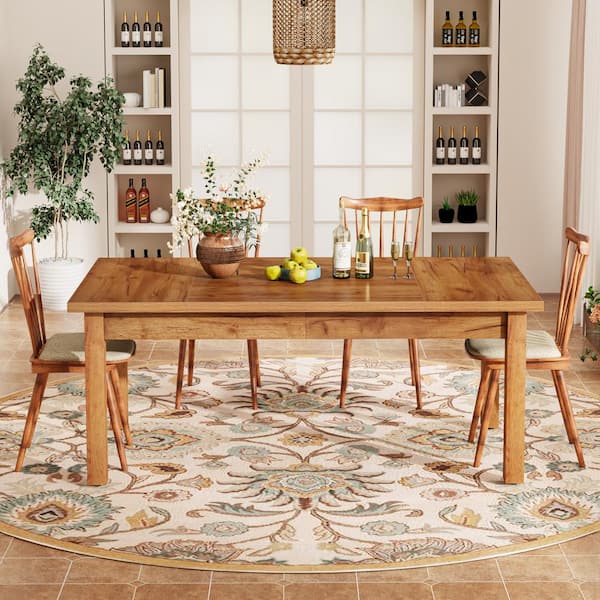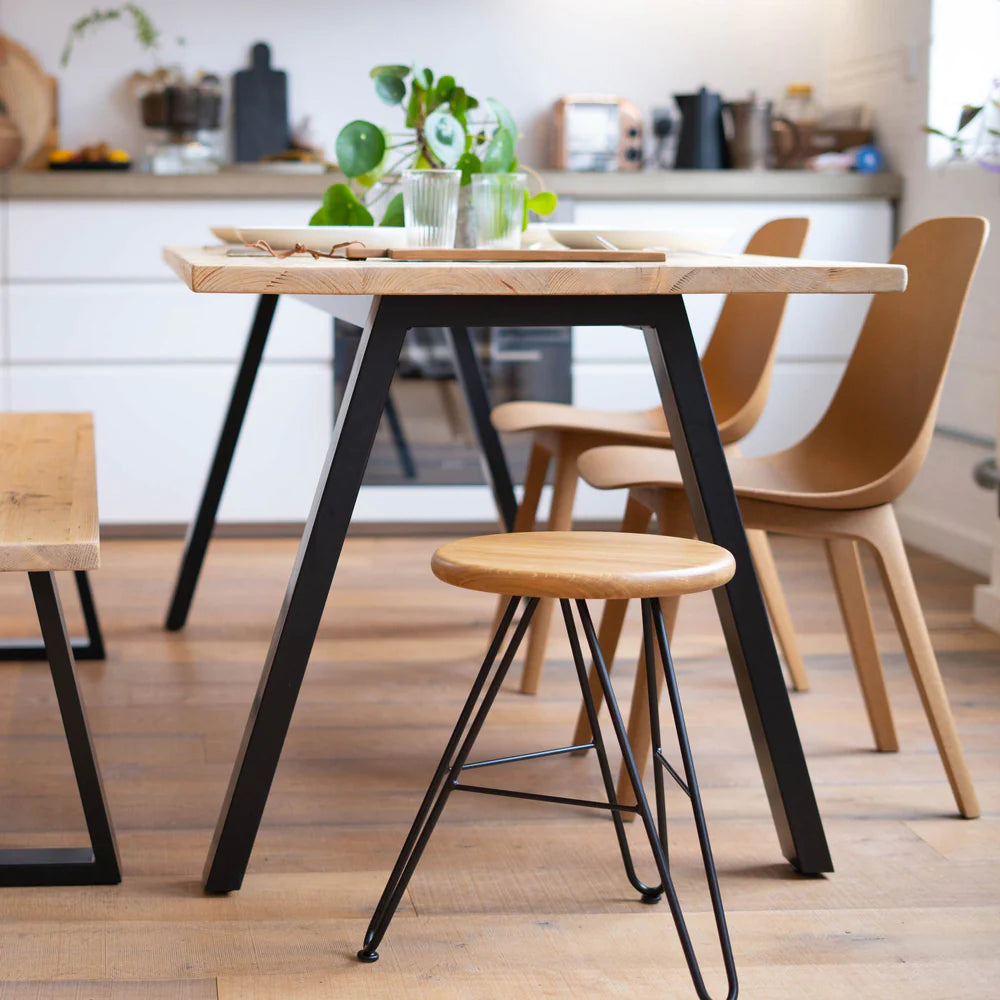Distinct Dining Room Table Legs to Change Your Dining Area
Distinct Dining Room Table Legs to Change Your Dining Area
Blog Article
Picking the Perfect Dining Table: What Styles Job Best for Your Home?
Choosing the ideal eating table for your home can be a nuanced process that stabilizes appearances and performance. To navigate these choices properly and discover a table that truly matches your home, think about the complying with facets in information.
Analyzing Your Area
Assessing the measurements and design of your dining location is a vital very first step in choosing the excellent table. Begin by determining the size and size of the space, making up entrances, windows, and other architectural attributes that might influence table positioning. This makes certain that your table not just fits but also permits comfortable activity around it.
Think about the variety of individuals you generally entertain. A table should accommodate your family's everyday demands while providing sufficient adaptability for periodic visitors. Generally of thumb, assign a minimum of 24 inches of table size per individual to guarantee a comfy dining experience.
It's also important to maintain ideal clearance around the table. Preferably, there ought to be at the very least 36 inches between the table side and walls or various other furnishings, enabling very easy access and movement. For areas where chairs with arms or extra storage space devices like buffets are entailed, raising this clearance to 48 inches is recommended.
Illumination and ambience play considerable duties as well. Make sure that your table straightens with existing lighting fixtures or prepare for appropriate illumination solutions. This thorough spatial assessment guarantees that your table not only fits literally however additionally balances with your room's general performance and visual.
Popular Table Styles

Typical table often include ornate information, rounded legs, and abundant timber finishes, evoking a feeling of ageless style. They are best for homes with traditional design or those seeking to add a touch of sophistication to their eating area.
Modern dining tables focus on simpleness and clean lines, usually including products like glass and steel. These tables are perfect for contemporary areas, offering a sleek and clean appearance that complements minimalist style approaches.
Rustic eating tables, on the various other hand, highlight natural products and a handcrafted look - dining room table legs. They frequently feature reclaimed wood and a troubled surface, creating a cozy and inviting environment. These tables work well in farmhouse-style homes or those looking for a cozy, organic feel
Industrial dining tables integrate resources such as metal and timber, usually showcasing an utilitarian aesthetic. This design is appropriate for lofts or city areas, adding a touch of rugged appeal and longevity to the eating experience.
Each design offers distinctive advantages, making it important to pick one that straightens with your home's overall style and your personal choices.
Product Options
When choosing a dining table, the selection of material plays a critical role in identifying both the table's appearances and functionality. Timber, steel, glass, and composite materials each deal unique benefits and difficulties, making it crucial to straighten the product with your home's style and way of life demands.
Timber is an ageless and flexible choice, available in ranges such as oak, walnut, and mahogany. Known for its sturdiness and warmth, wood matches both traditional and contemporary insides. Nonetheless, it requires normal upkeep to stop scratches and warping.
Steel tables, frequently crafted from stainless-steel, light weight aluminum, or functioned iron, are praised for their modern appeal and effectiveness. They are especially matched for commercial or minimal settings yet can be prone to damages and might really feel cold to the touch.
Glass table bring an air of beauty and openness, suitable for smaller sized areas as they produce an illusion of more area. While very easy to tidy, glass can be at risk to spots and needs careful managing to avoid chips and splits.
Composite materials, such as MDF and plywood, offer economical and customizable solutions, though they might do not have the durability of natural materials. Selecting the appropriate material guarantees your dining table is both a useful asset and an aesthetic pleasure.
Sizes And Shape Considerations
After figuring out the suitable material for your eating table, the next factor to consider is choosing the right form and dimension to match your area. On the other hand, round tables promote a sense of intimacy and are excellent for smaller dining locations, encouraging conversation by getting rid of edges and making everybody feel similarly included.
Dimension is just as essential and must be determined by both the area's measurements and the variety of individuals you plan to seat frequently. As a regulation of thumb, allot a minimum of 24 inches of table width each to ensure comfy eating. Furthermore, think about the table's clearance area: there ought to go to the very least 36 inches in between the table edge and the wall surfaces or other furnishings. This makes certain that restaurants can move around weblink conveniently without really feeling confined. Prolonging tables provide flexibility if you often organize larger gatherings, providing added seats when needed without occupying added try this space daily. Choosing the ideal sizes and shape guarantees both functionality and aesthetic harmony in your dining location.
Matching Your Design
Selecting a table that integrates with your existing style is pivotal in producing a cohesive and inviting room. Begin by analyzing your existing interior decoration style, whether it be contemporary, typical, rustic, or diverse. The table need to complement the overall aesthetic, not take on it. As an example, a smooth, minimalist table with clean lines is ideal for a contemporary home, while a vintage, luxuriant table fits a more traditional setting.
Shade and product are similarly significant. If your style features warm tones and natural products, think about a wooden table to enhance the natural feeling. Conversely, a glass or steel table may be better suited in an area controlled by trendy shades and commercial elements. Take notice of the surface, as it needs to mirror various other furniture and components to preserve harmony.
A rough-hewn, reclaimed timber table can include personality to a rustic space, while a sleek marble surface can elevate an extravagant eating area. A well-matched dining table not just boosts aesthetic appeal but additionally enriches the general dining experience.

Verdict
Choosing the optimal eating table demands careful factor to consider of room, design, materials, form, and dimension (dining room table legs). Traditional tables complement classic insides with rich timber coatings, while contemporary tables fit contemporary setups via glass and metal. Rustic designs present heat through natural materials, and industrial designs improve metropolitan settings with raw components. Balancing the table with existing decoration makes sure both capability and aesthetic charm, contributing to a cohesive and visually pleasing eating location. Find Out More
Report this page